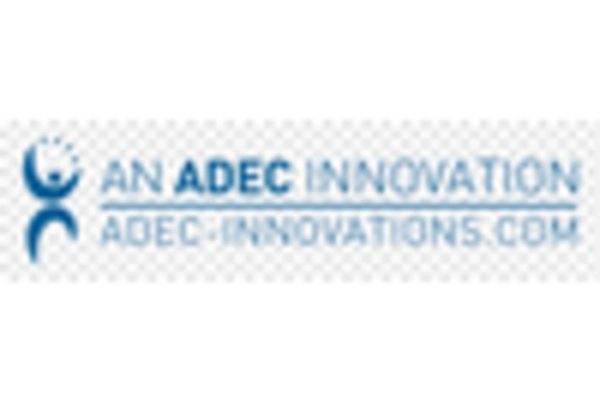Rising Cosmetic Dentistry Trends
The growing popularity of cosmetic dentistry is emerging as a significant driver for the market. Patients are increasingly seeking aesthetic enhancements, such as teeth whitening, veneers, and orthodontic treatments. This trend has led to a heightened demand for specialized hand-tools that facilitate cosmetic procedures. In 2023, the cosmetic dentistry segment accounted for approximately 30% of the total dental services market in the US, indicating a substantial opportunity for growth. As dental professionals invest in advanced hand-tools to meet the rising expectations of patients, the dental hand-tools market is poised for expansion, reflecting the evolving landscape of dental care.
Regulatory Standards and Quality Assurance
The dental hand-tools market is significantly influenced by stringent regulatory standards and quality assurance measures. Regulatory bodies in the US impose rigorous guidelines to ensure the safety and efficacy of dental tools. Compliance with these standards is essential for manufacturers aiming to maintain market access and consumer trust. As a result, there is a growing emphasis on the development of high-quality hand-tools that meet these regulatory requirements. This focus on quality not only enhances patient safety but also drives innovation within the dental hand-tools market, as manufacturers strive to create tools that adhere to the highest standards of performance and reliability.
Aging Population and Increased Dental Needs
The demographic shift towards an aging population in the US is significantly impacting the market. As individuals age, they often face a higher incidence of dental issues, necessitating more frequent dental interventions. By 2030, it is estimated that nearly 20% of the US population will be over 65 years old, leading to an increased demand for dental services. This demographic trend compels dental practitioners to equip themselves with advanced hand-tools that cater to the specific needs of older patients, such as tools designed for precision and ease of use. The dental hand-tools market is likely to benefit from this demographic shift, as practitioners seek to enhance their service offerings.
Increasing Demand for Preventive Dental Care
The market is experiencing a notable surge in demand driven by the growing emphasis on preventive dental care among the population. As awareness regarding oral health increases, patients are more inclined to seek regular dental check-ups and cleanings. This trend is reflected in the rising number of dental visits, which reached approximately 200 million in the US in 2023. Consequently, dental professionals are investing in high-quality hand-tools to provide effective preventive treatments. The market is projected to grow at a CAGR of around 5% over the next five years, indicating a robust expansion as practitioners adapt to meet the evolving needs of their patients.
Technological Integration in Dental Practices
The integration of technology within dental practices is reshaping the market. Innovations such as digital imaging and CAD/CAM systems are becoming commonplace, prompting dental professionals to adopt hand-tools that complement these technologies. For instance, tools that are compatible with digital workflows are increasingly sought after, as they enhance efficiency and precision in dental procedures. The market is witnessing a shift towards tools that not only perform traditional functions but also integrate seamlessly with advanced technologies. This trend suggests that the dental hand-tools market will continue to evolve, driven by the need for tools that align with modern dental practices.

















Leave a Comment